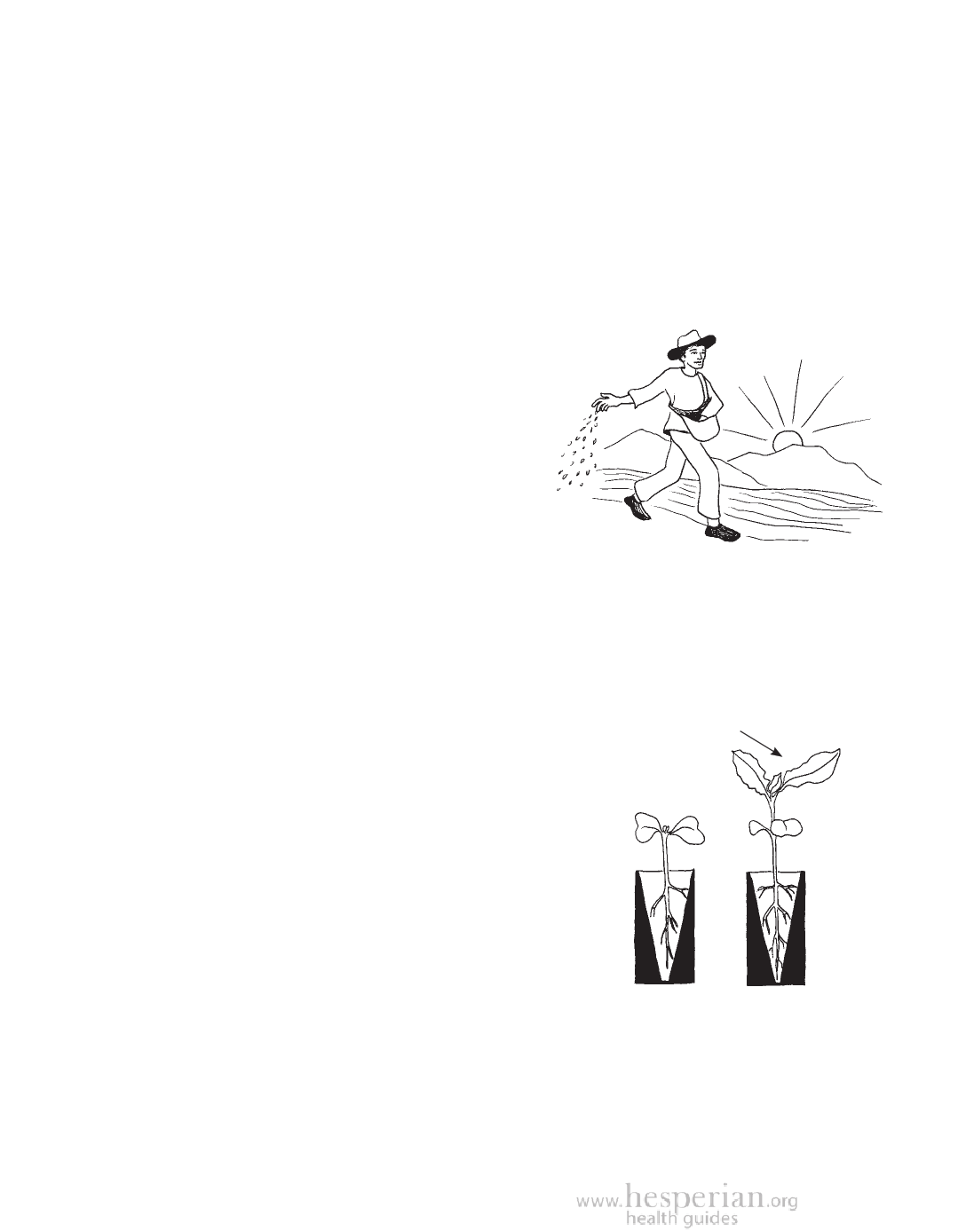
304 Sustainable Farming
Sprouting seeds
Some seeds need special treatment in order to sprout (see page 207). But all
seeds need:
• water. Soak seeds in water overnight before planting. If you use very hot
(but not boiling) water, it will kill many plant diseases and pests carried
by seeds. This will also help sprout seeds that usually do so only after
passing through the stomachs of animals. Experiment first with a few
seeds and then plant them to be sure they will sprout.
• air. If the soil is compacted or waterlogged, seeds will
not sprout because there is not enough air.
• daylight. Some seeds, especially those
from northern areas where there is very
different weather at different times of
year, will only sprout when there is just
the right amount of light.
• correct temperature. Because each crop
has its own season, different seeds sprout best at
different temperatures and at different times of year.
Planting seeds
The 2 common ways to plant are by starting seeds in a nursery or by planting
right into the ground. Which method you use depends on what crops you want,
the weather conditions when you are ready to plant, and whether or not you
have room for a nursery (to make a nursery, see page 209).
Direct planting
Larger seeds are best planted directly in the field because
their roots grow quickly and are easily damaged if they are
transplanted. Make planting holes 2 or 3 times as deep as
the size of the seed. Drop 1, 2, or 3 seeds in each hole
and cover the seeds.
True leaves
Very tiny seeds should be tossed out over the soil
to spread widely over the planting area. Mixing seeds
with sand when you toss them out will prevent the
seeds from sticking together. Then cover the planting
area with a thin layer of mulch or soil. Also, using a
roller to lightly press the seeds into the soil
will help them sprout.
Most vegetables can be transplanted once
they have their first set of true leaves.
Starting seeds in a nursery
Starting seeds in a nursery helps seeds sprout by controlling temperature,
water, and pests. Transplanting seedlings from the nursery into freshly weeded
fields helps young plants make better use of the soil and water.
A Community Guide to Environmental Health 2012